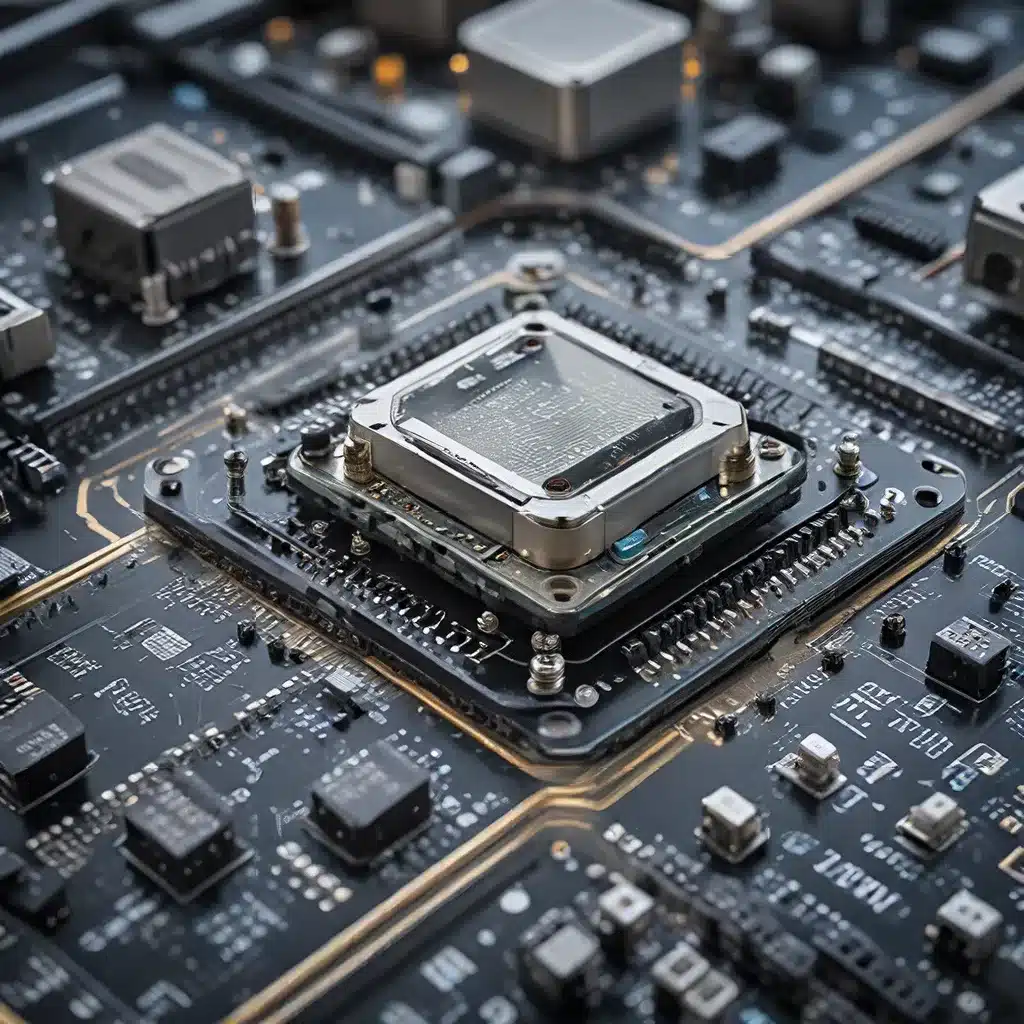
In the rapidly evolving landscape of the Internet of Things (IoT), the integration of sensor fusion technology has emerged as a game-changer, enabling the development of more efficient, intelligent, and responsive IoT systems. By combining data from multiple sensors, sensor fusion unlocks a wealth of insights that can revolutionize various industries, from manufacturing and energy management to smart cities and healthcare.
The Synergy of Sensors and IoT
At the heart of the IoT ecosystem lies a vast network of connected devices, each equipped with an array of sensors that collect and transmit a wealth of data. These sensors can monitor a diverse range of parameters, including temperature, humidity, pressure, motion, and even air quality. When integrated into IoT systems, this data can provide unprecedented visibility into operational processes, asset performance, and environmental conditions.
However, relying on a single sensor can often lead to incomplete or inaccurate information, as each sensor has its own limitations and potential sources of error. This is where sensor fusion comes into play, combining data from multiple sensors to create a more comprehensive and reliable understanding of the IoT environment.
Unlocking the Power of Sensor Fusion
Sensor fusion is the process of integrating data from diverse sensors to produce a more accurate, complete, and reliable representation of the monitored system or environment. By leveraging advanced algorithms and data processing techniques, sensor fusion can:
-
Enhance Accuracy: By cross-referencing and validating data from multiple sensors, sensor fusion can minimize the impact of individual sensor errors and uncertainties, leading to more reliable and precise measurements.
-
Improve Robustness: In the event of a sensor failure or malfunction, sensor fusion can leverage the data from other sensors to maintain system performance, ensuring continuous and reliable operation.
-
Enable Context-Aware Insights: By combining data from various sensors, sensor fusion can provide a more comprehensive and contextual understanding of the monitored system, allowing for more informed decision-making.
-
Facilitate Advanced Analytics: The rich data generated through sensor fusion can be further analyzed using machine learning and artificial intelligence algorithms, unlocking deeper insights and enabling predictive capabilities.
Sensor Fusion in IoT Applications
The applications of sensor fusion in the IoT realm are vast and diverse, transforming industries and enabling new possibilities. Here are some compelling examples:
Smart Manufacturing
In the manufacturing industry, sensor fusion is revolutionizing predictive maintenance and quality control. By integrating data from sensors monitoring equipment performance, environmental conditions, and production processes, manufacturers can anticipate and proactively address potential issues, minimize downtime, and ensure consistent product quality.
Energy Management
In the energy sector, sensor fusion is empowering smart grid and smart building technologies. By combining data from sensors monitoring energy consumption, renewable energy generation, and environmental factors, IoT systems can optimize energy usage, predict demand, and enable more efficient resource allocation.
Smart Cities
Sensor fusion is a cornerstone of smart city initiatives, enabling the integration of diverse data sources to improve urban planning, traffic management, and public safety. By fusing data from traffic sensors, surveillance cameras, and environmental monitors, cities can better understand and respond to the needs of their citizens.
Healthcare and Wellness
In the healthcare industry, sensor fusion is revolutionizing remote patient monitoring and personalized wellness. By combining data from wearable devices, medical sensors, and environmental factors, IoT systems can provide healthcare professionals with a comprehensive view of a patient’s health, enabling early intervention and tailored treatment plans.
Addressing the Challenges of Sensor Fusion in IoT
While the benefits of sensor fusion in IoT are compelling, there are several challenges that must be addressed to ensure the seamless integration and effective deployment of these technologies:
-
Data Integration and Interoperability: Integrating data from diverse sensors and IoT devices with varying communication protocols and data formats can be a complex challenge. Standardization efforts and the adoption of open protocols are crucial to addressing this issue.
-
Scalability and Computationally Efficient Algorithms: As the number of connected devices and sensors grows, the need for scalable and computationally efficient sensor fusion algorithms becomes paramount. Developments in edge computing and cloud-based analytics can help address these scalability concerns.
-
Cybersecurity and Privacy: The increased connectivity and data-driven nature of IoT systems present significant cybersecurity risks and privacy concerns. Robust security measures, including encryption, access controls, and anomaly detection, are essential to safeguarding IoT ecosystems.
-
Energy Efficiency: Many IoT devices are battery-powered or have limited energy resources. Developing energy-efficient sensor fusion algorithms and power-saving strategies is crucial to ensuring the longevity and sustainability of IoT systems.
The Future of Sensor Fusion in IoT
As the IoT landscape continues to evolve, the role of sensor fusion is poised to become even more integral and transformative. Emerging technologies, such as 5G connectivity, edge computing, and artificial intelligence, will further enhance the capabilities of sensor fusion, enabling real-time, intelligent, and context-aware decision-making.
Moreover, the integration of sensor fusion with other disruptive technologies, such as digital twins and blockchain, will unlock new possibilities for supply chain optimization, predictive maintenance, and trusted data exchange. As the IoT ecosystem matures, the impact of sensor fusion will be felt across a wide range of industries, driving innovation, efficiency, and sustainability.
By embracing the power of sensor fusion, IoT stakeholders can unlock a new era of intelligent, responsive, and adaptable systems that transform the way we live, work, and interact with our environments. The future of IoT is deeply intertwined with the advancements in sensor fusion technology, and those who harness this potential will be poised to lead the charge in the connected digital landscape.
To explore more about sensor networks and IoT, visit sensor-networks.org.